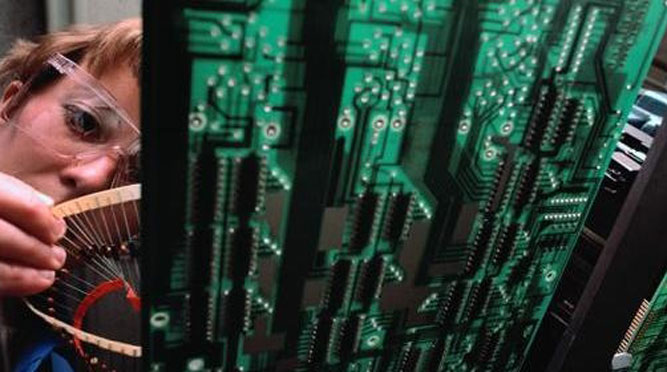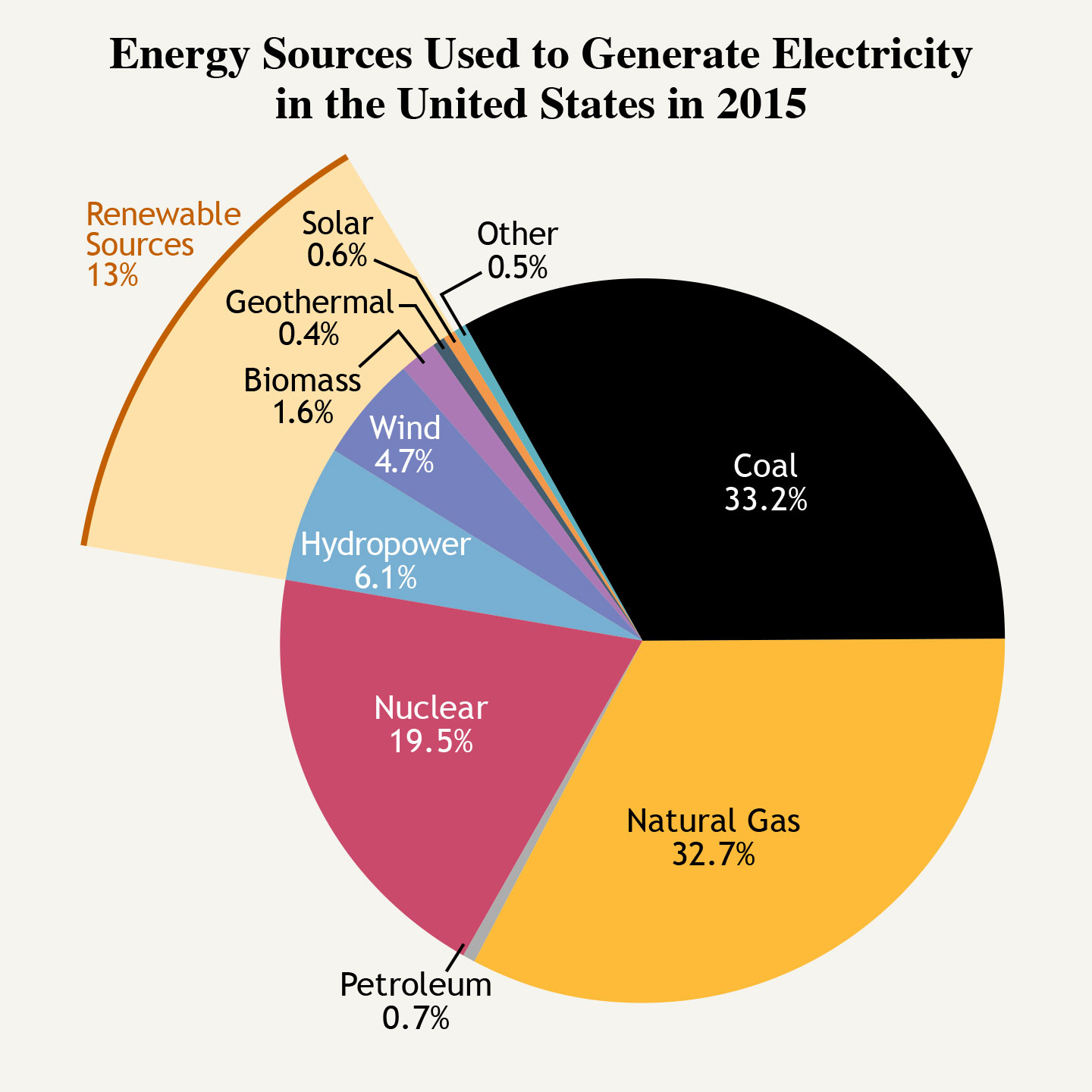Electricity
Electricity
Electricity cannot be mined from the ground like coal. So it is called a secondary source of energy, meaning that it is derived from primary sources, including coal, natural gas, nuclear fission reactions, sunlight, wind, and hydropower. Most direct uses of primary energy are limited to generating heat and motion. Electricity, by contrast, is extremely versatile, with a wide range of complex applications. Electricity plays such an essential role in contemporary American life that its supply and demand are often examined separately from the primary sources used to produce it.
The U.S. Energy Information Administration (EIA) projects an 11% increase in electricity generation in the United States between 2015 and 2040, or about 0.4% per year. In practical terms, that means a corresponding increase in the demand for coal and gas, at least in the near future. Electricity-generating plants now consume nearly two-fifths of U.S. energy from all sources, including about 91% of America’s coal and 35% of its natural gas, as well as biomass and landfill gas. Burning those fuels produces copious amounts of greenhouse gases (GHGs) and other pollutants.
Generating electricity using renewable sources is a challenging task, but some progress is being made. According to EIA projections, the share of total energy used by power plants from sources such as solar, wind, and geothermal is projected to reach 28% by 2040. However, integrating the energy from many of these renewable sources would likely require expansion and enhancement of the electric transmission system, such as the addition of more power lines.
The share of total energy used by power plants from sources such as solar, wind, and geothermal is projected to grow to about 28% by 2040.
A sustained effort and accelerated deployment of new technologies and efficient renewable sources could power a greater percentage of U.S. electricity needs. The eventual outcome will depend on consumers’ choices, U.S. government policy, and the market price of existing and alternative energy sources.
Nuclear energy produces no GHGs in the process of generating electricity and currently produces 20% of America’s electric power. However EIA projects that total electrical generation by nuclear power will remain flat during the next 25 years. Efforts to increase capacity face three large, though not insurmountable, hurdles: high capital investment costs associated with the construction of new nuclear power plants; resistance from citizen groups that oppose nuclear power and storage of radioactive material; and international security issues. (Both the preparation of nuclear reactor fuel and the disposal of nuclear reactor fuel after its use create opportunities to produce materials that can be used in nuclear weapons and that are generally not available by other means.)
Getting electric power to consumers may be as much of a challenge as creating it. Generating stations are usually built away from load centers because sites are easier to find and fewer people are disturbed by the presence of the infrastructure. Electrical power is delivered by a complex high-voltage transmission and distribution system (“the grid”) that consists of more than 19,000 electric generating units with more than 1 million megawatts of generating capacity connected to more than 450,000 miles of transmission lines. It has evolved piece by piece over decades, has become increasingly stressed in recent years, and there is increasing concern about its vulnerabilities. Most Americans are aware that massive blackouts cause widespread disruption: For example, a single event in August 2003 cut off power to some 50 million customers from Ohio to New York and Canada, with estimated losses of around $6 billion. But fewer of us know that even in relatively uneventful periods, power outages and interruptions cost Americans at least $150 billion each year—about $500 for every man, woman, and child—according to the U.S. Department of Energy (DOE).
Upgrading the U.S. grid to the level of a “Smart Grid”—that is, one in which the components of the delivery system are controlled and coordinated by computerized remote data acquisition and automated operations—represents a significant investment but would yield numerous benefits. New technologies and equipment would improve reliability, resulting in fewer system failures and quicker restoration of power when blackouts occur. An upgraded grid could facilitate increased reliance on renewable and intermittent resources, assuming development of viable storage methods. And a modern grid would allow for the creation of wholesale energy markets, better prices for customers, and a more distributed system of power generation.
Related topics
Source Material
- Overview and Summary of America’s Energy Future: Technology and Transformation (2010)
- Terrorism and the Electric Power Delivery System (2012)
- The Resilience of the Electric Power Delivery System in Response to Terrorism and Natural Disasters—Summary of a Workshop (2013)
- Overcoming Barriers to Deployment of Plug-in Electric Vehicles (2015)
- Transitions to Alternative Vehicles and Fuels (2013)
- Hidden Costs of Energy: Unpriced Consequences of Energy Production and Use (2010)


